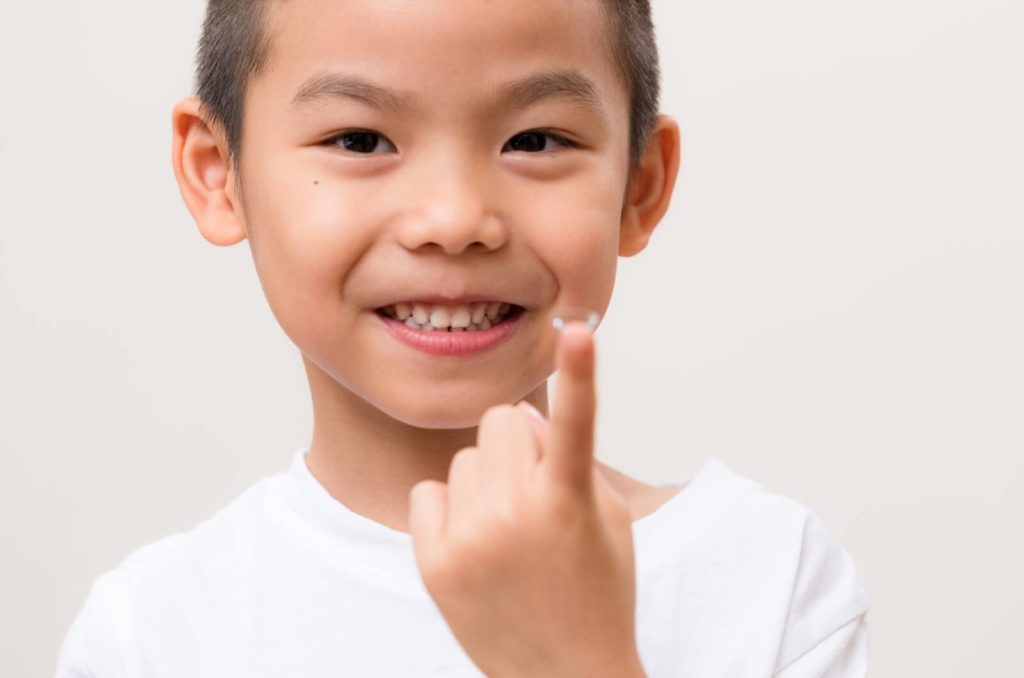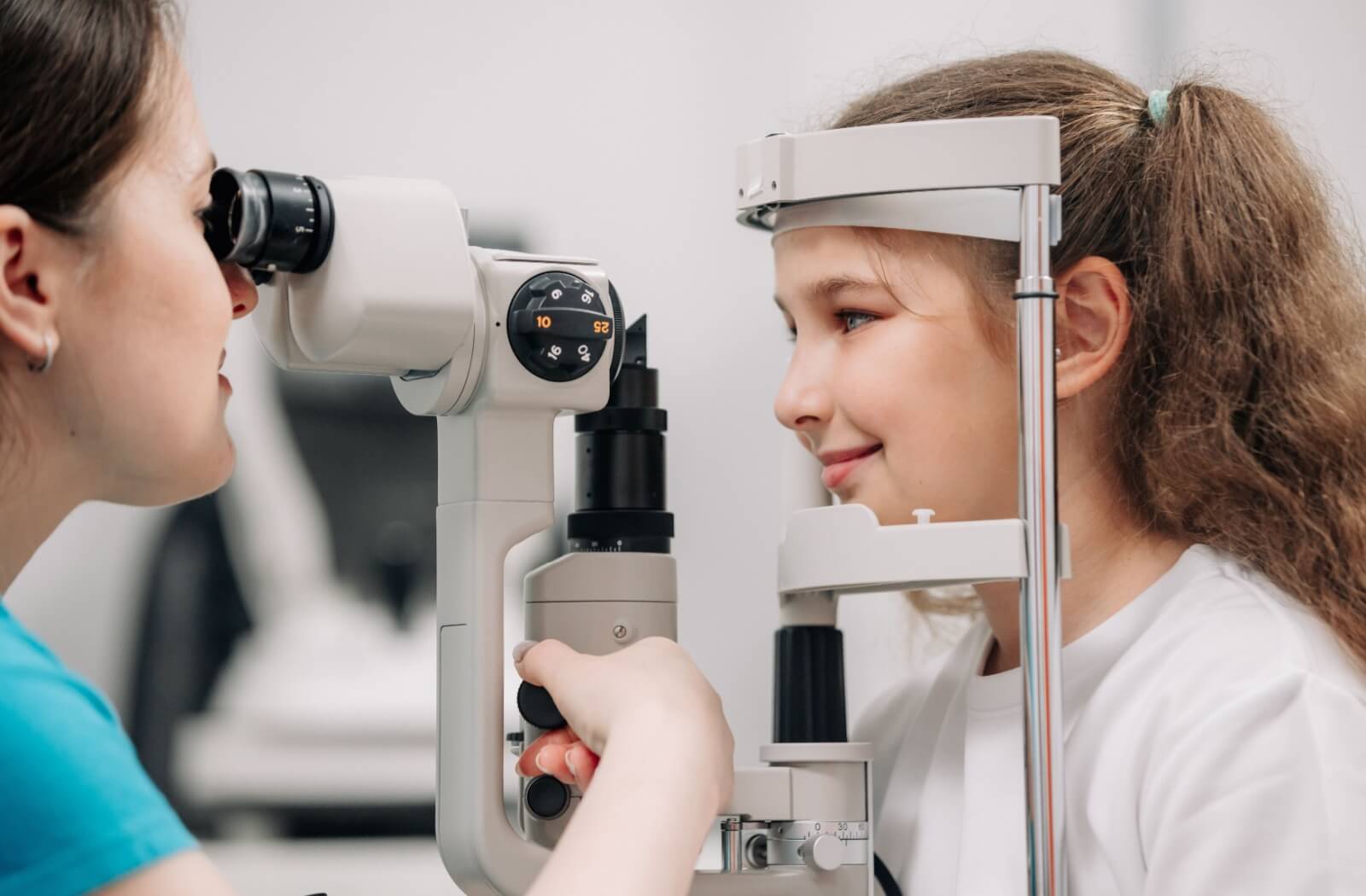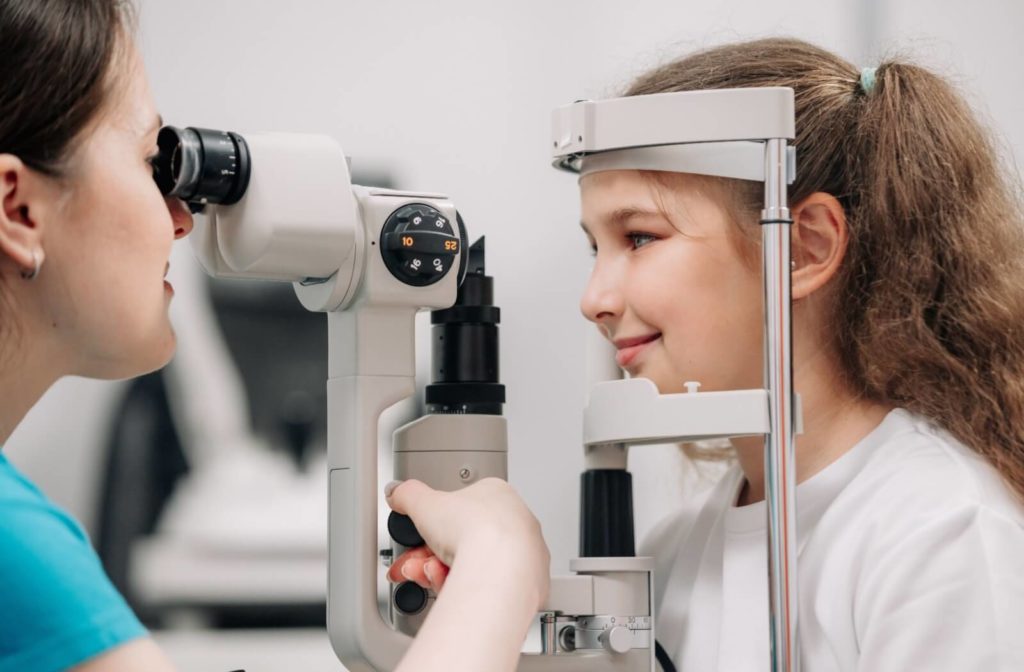Myopia is a common vision problem—and it’s becoming more of an issue every year. Myopia, or nearsightedness, affects how a person sees at a distance. But with early intervention, it’s possible to protect more of a child’s future vision and help their future eye health. And it all starts with myopia management lenses.
Myopia management lenses are special eyeglasses and contact lenses. They correct vision every day while slowing how myopia progresses. This means you can step in and help protect your child’s future, and all you need to do is book an eye exam with your optometrist.
What Is Myopia?
Your vision depends heavily on the shape of your eye. When your eye is shaped properly, light bends through the clear tissue at the front of the eye called the cornea. Then, this light focused onto the retina, where clear images can be sent through to the brain.
However, when the shape of the eye changes even slightly, this process is disrupted. This is called a refractive error—a problem with how your eyes refract light.
Myopia, or nearsightedness, is the most common refractive error. With myopia, light focuses in front of the retina rather than directly on it. This means faraway objects may appear blurry, while close ones still look clear.
This develops in early childhood and worsens through adolescence. Then, the eye stabilizes in early adulthood, and vision issues remain for life. This is why early detection is so important, as it lets you step in to help a child before myopia progresses too far.
How to Tell If a Child Is Nearsighted
Recognizing early signs of myopia in your child makes all the difference. You’ll need to watch for any hint your child is struggling to see clearly. Myopia primarily affects distance vision, so keep an eye out for:
- Squinting frequently
- Sitting too close to screens like TVs or tablets
- Complaining of headaches or eye strain
- Complaints about struggling to see the board in class
- Holding books or objects unusually close to the face when reading or observing
- Avoiding activities that require clear distance vision, such as sports or outdoor play
If you notice any of these patterns in your child, it’s time to take action. Your first step should be to reach out to your optometrist—after that, you can talk about myopia management.
What Is Myopia Control?
Myopia is progressive—it gets worse if it’s left unmanaged or unaddressed. Fortunately, your optometrist can work closely with you to slow how far a child’s myopia progresses. There are several treatments for slowing myopia, each with its own benefits.
Here at Yonge Eyes Optometry, we manage myopia with the following approaches:
- Atropine eye drops
- Peripheral Defocus Lenses
- Orthokeratology
Together, these strategies can effectively slow myopia progression and preserve more of your child’s future vision. So how do they work?
Atropine Eye Drops
Atropine eye drops are a common tool for myopia management. These drops include small doses of atropine—usually less than 1%—to relax muscles inside the eye.
These specialty drops are easy to use. You apply them daily as recommended, and they dilate your child’s pupils. This lets more light into the eye and relaxes how much the eye needs to focus, helping slow myopia progression. While the drops do temporarily cause light sensitivity, any side effects are short-term. Plus, the drops themselves are normally applied before bed.

Peripheral Defocus Lenses
Peripheral Defocus lenses are one of the most efficient ways to slow myopia. These aren’t like normal lenses—they have several prescriptions built into each lens.
While one prescription corrects your child’s vision, the other changes how light falls on the outside of the retina, which signals to your child’s eye that it should stop growing longer—thereby slowing the progression of myopia.
Peripheral Defocus lenses are a popular choice. They’re non-invasive, safe, and incredibly effective. These lenses are a practical choice for everyday wear, and, in many cases, can slow myopia’s progression by up to 50%!
Orthokeratology
Orthokeratology, also called ortho-k, also uses specialty lenses. However, these lenses aren’t worn during the day. Instead, ortho-k lenses are worn overnight.
While your child sleeps, ortho-k lenses gently (and temporarily) reshape their corneas. The lenses are then removed in the morning. The cornea keeps its new shape throughout the day, allowing your child to see without needing other corrective lenses.
Ortho-k lenses are particularly helpful for children who enjoy staying active. They help children enjoy sports or other activities without the worry of losing their lenses or breaking their glasses. Ortho-k is an excellent option for myopia management, as they provide clear vision and comfort every day.
Is It Time to Try Myopia Control?
Myopia management is an important tool for helping preserve your child’s future vision. Our team at Yonge Eyes Optometry is here to help. Contact us today to book your appointment. Together, we can work towards a clearer future for your child.



